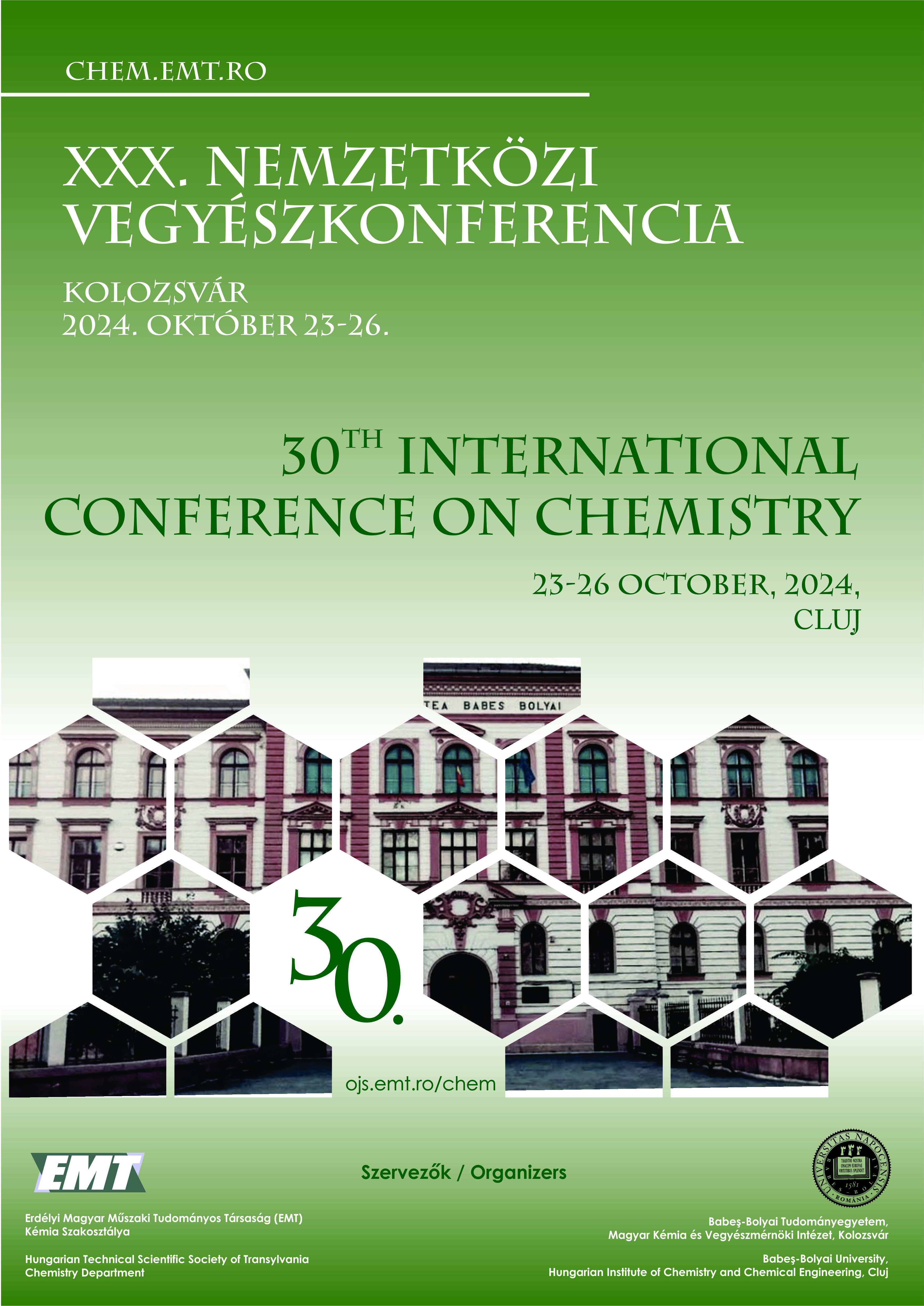Fémorganikus katalízis modell biomembránokban, sejtorganellumokban és élő sejtekben vízoldható fémkomplex katalizátorokkal
Organometallic catalysis in model biomembranes, cell organelles and living cells with the use of water-soluble metal complex catalysts
Keywords:
biomembrane, lipid, hydrogenation, organometallic, organometallic catalysis, aqueous medium, /, biomembrán, hidrogénezés, fémorganikus katalízis, vizes közegAbstract
Biomembranes are important constituents of living cells. Their role is versatile, in that they not only separate the cell and its environment, but also take active part in mass transport through the cell wall and influence functioning of membrane-bound proteins (among them: enzymes). A big part of polar lipids, which play important roles in biomembranes, often contain unsaturated fatty acyl moieties. Ratio of unsaturated to saturated fatty acids significantly influences properties of the membranes, e.g it has a decisive role in adaptation of the cell to cold- and heat-shock. Since the natural medium of cells is water therefore we developed a method for hydrogenation of polar lipids with the use of water-soluble organometallic catalysts (complexes of Rh, Ru, Ir, and Pd with sulfonated triphenylphosphine, 1,3,5-triaza-7-phosphadamantane, Alizarin Red, or N-heterocyclic carbene ligands). With its use, it was possible –among others– to clarify the role of plasmamembrane in sensing environmental temperature. The success of this hydrogenation method, initiated study of application of catalytic reactions (e.g. olefin metathesis) in other laboratories, too, for targeted modification of living cells.
ÖSSZEFOGLALÓ
Az élő sejtek fontos alkotói a biomembránok. Szerepük sokrétű, amennyiben nemcsak elhatárolják a sejtet környezetétől, de aktívan részt vesznek a sejtfalon történő anyagtranszportban, és befolyásolják a membránkötött fehérjék (köztük enzimek) működését. A biomembránok felépítésében igen jelentős szerepet játszó poláris lipidek nagy része telítetlen zsírsavláncokat tartalmaz. A telített és telítetlen zsírsavak aránya nagy mértékben befolyásolja a membránok tulajdonságait, így pl. szerepe van a hideg- és hősokkhoz történő alkalmazkodásban. Minthogy a sejtek természetes környezete vizes közeg, ezért vízben oldható fémorganikus katalizátorok (szulfonált trifenilfoszfin, 1,3,5-triaza-7-foszfaadamantán, alizarinvörös és N-heterociklusos karbén ligandumú Rh-, Ru-, Ir- és Pd-komplexek) felhasználásával módszert dolgoztunk ki poláris lipidek hidrogénezésére. Ennek használatával –egyebek mellett– tisztáztuk a plazmamembrán szerepét a sejtek hőérzékelésében. A sikeres módszer más laboratóriumokban is iniciálta katalitikus reakciók (köztük az olefin metatézis) alkalmazását élő sejtek célzott módosítására.


